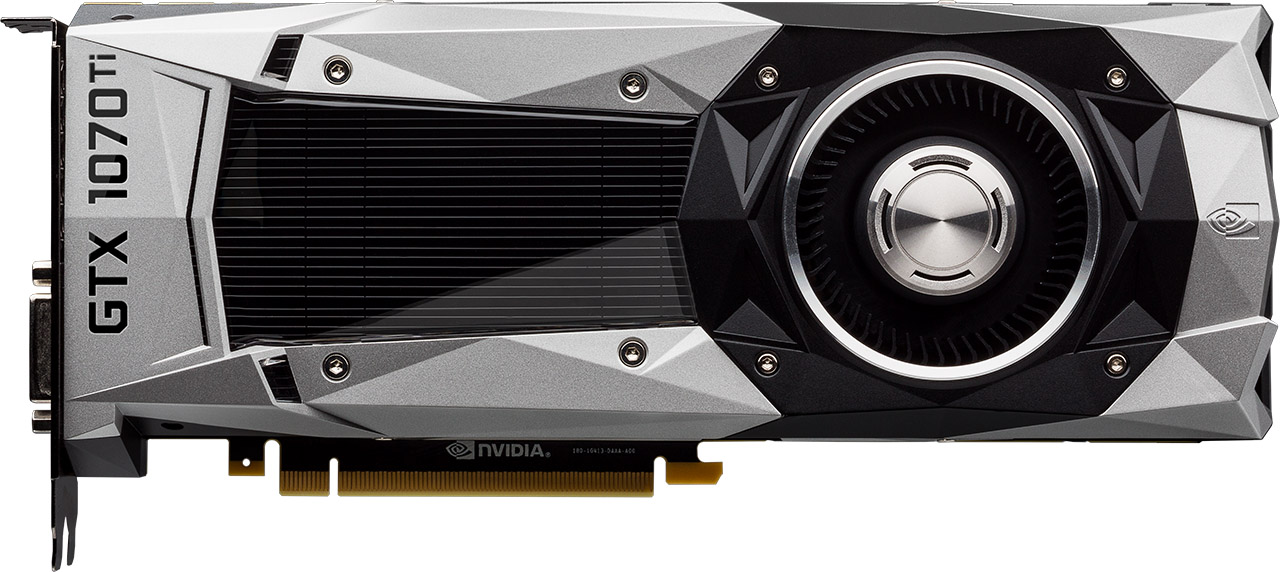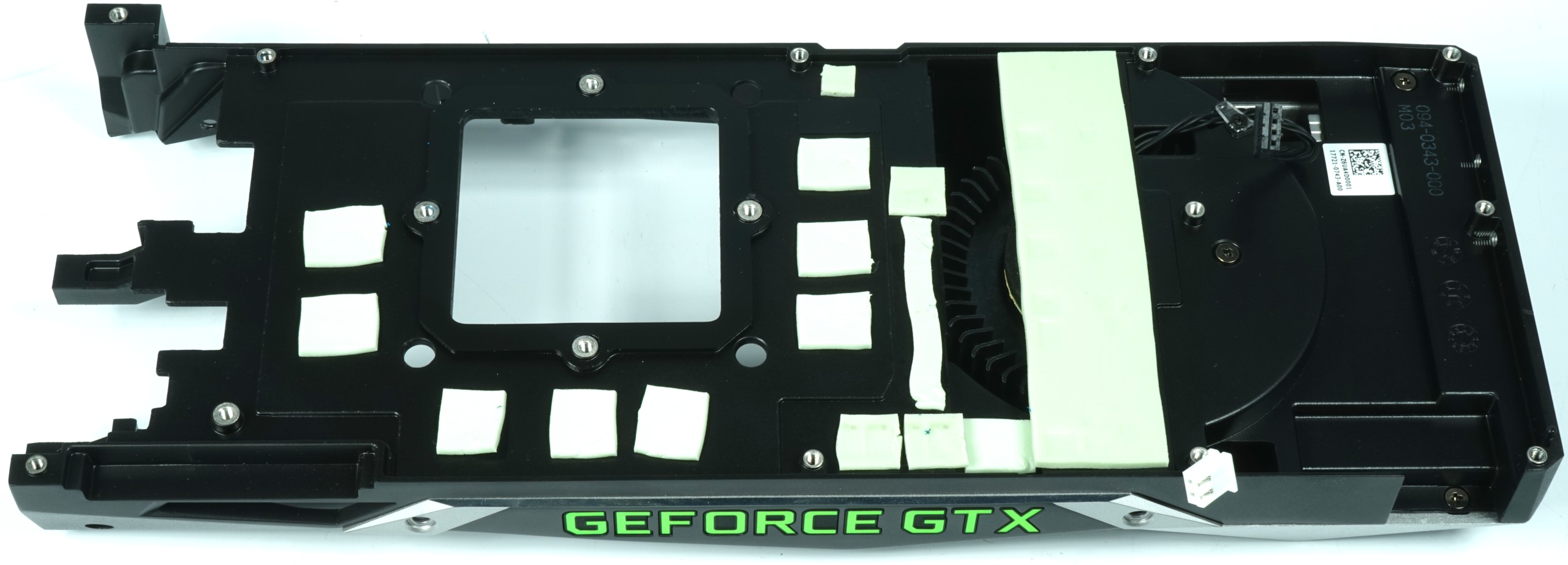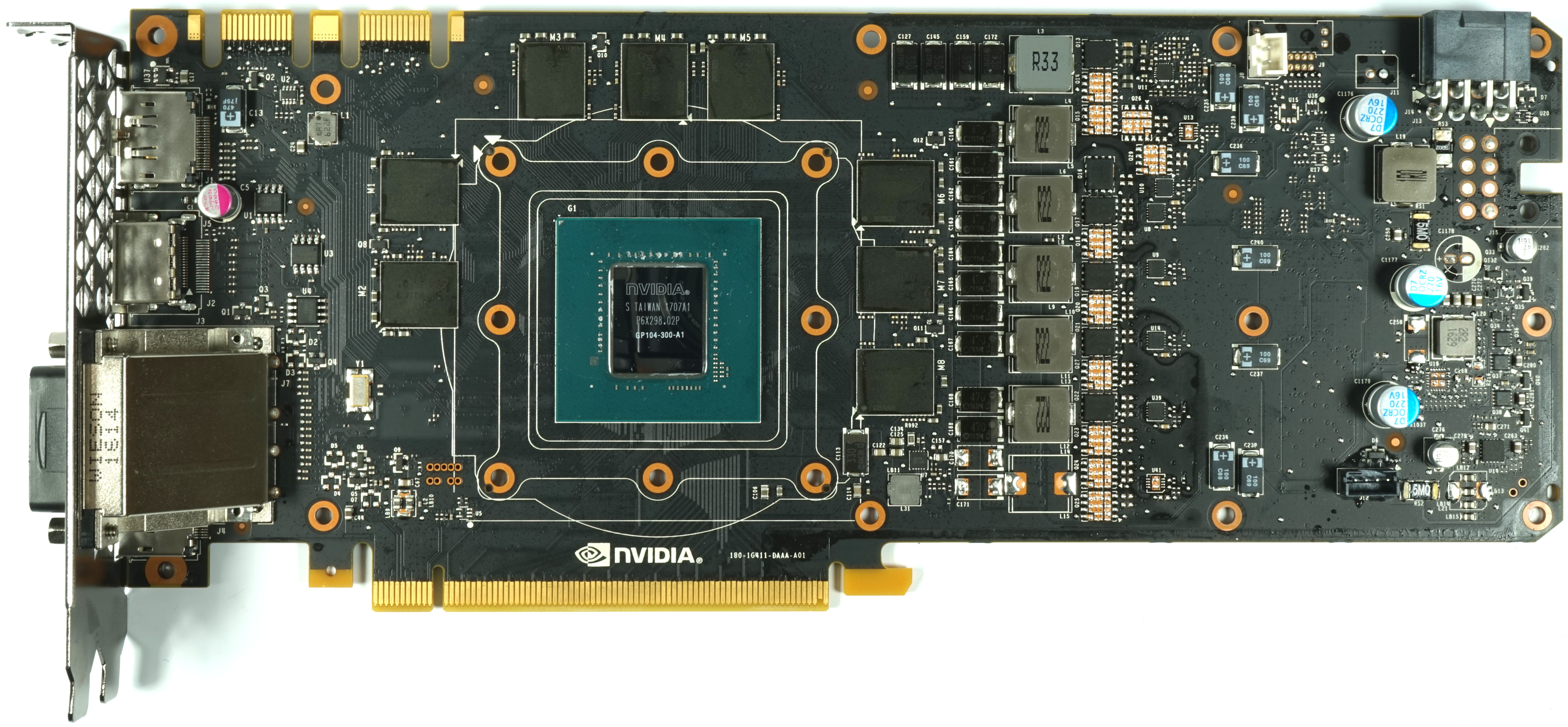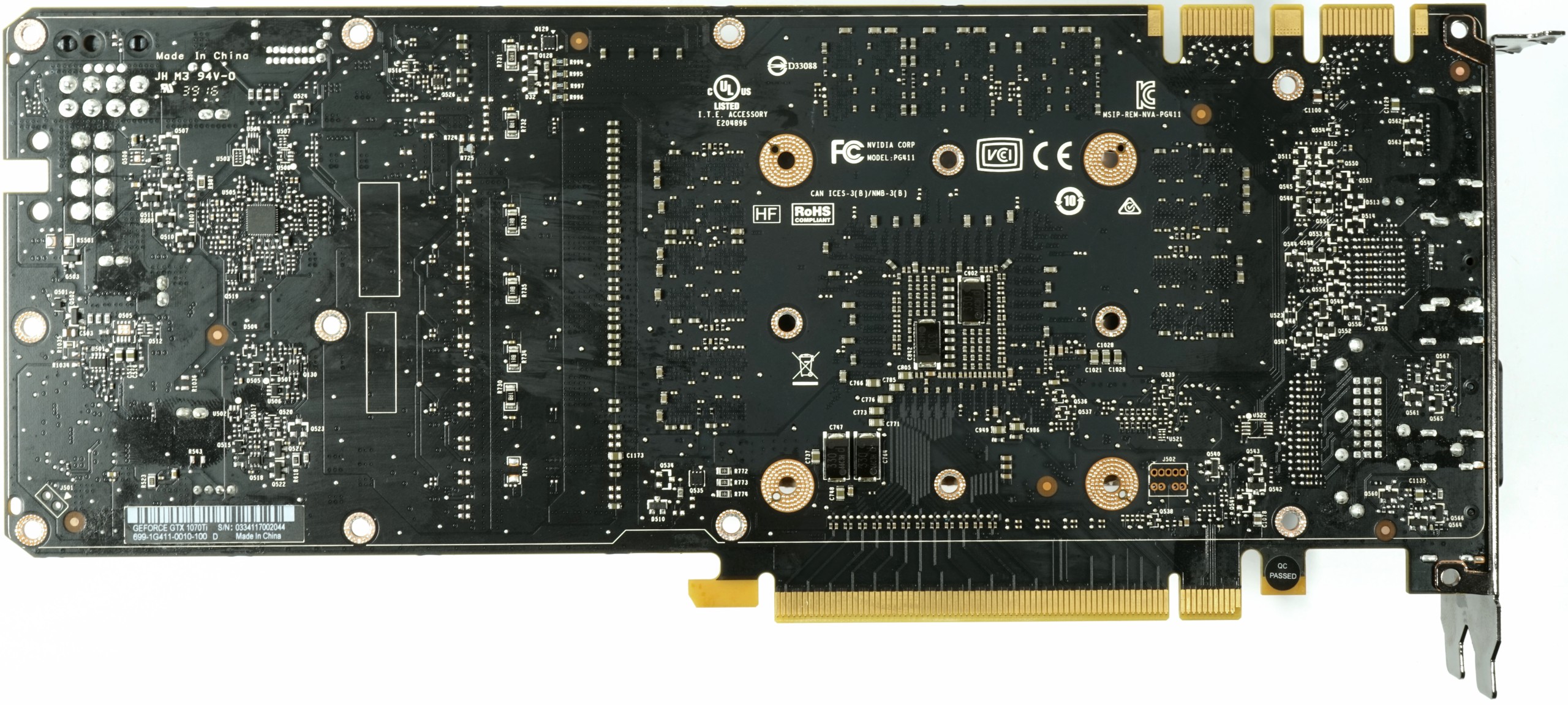Nvidia GeForce GTX 1070 Ti 8GB Review: Vega In The Crosshairs
Why you can trust Tom's Hardware
A Closer Look At Nvidia's GeForce GTX 1070 Ti FE
Nvidia's Founders Edition card sports a familiar industrial design. It satisfyingly well-built: the shroud doesn't just look like metal, it's actually made of aluminum.
Specifications
Exterior
The cooler's injection-molded aluminum cover is painted silver and black, similar to GeForce GTX 1070 and 1080. This does make its matte surfaces susceptible to scratches.
A metal fan shroud helps convey this card's exceptional build quality, but it also adds a lot of weight: the GeForce GTX 1070 Ti FE exceeds 1kg. It's very similar to GeForce GTX 1080 FE, though. The new card is just under 10g lighter.
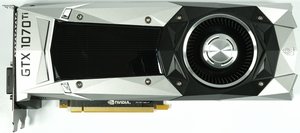
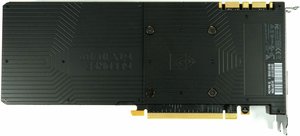
A two-part backplate hides this card's PCB. But it's an esthetic add-on that doesn't improve thermal performance in any way. If you need space for a second card in SLI, or simply want better ventilation, remove both sections without fear of negative consequences.
The centered GeForce GTX logo, which lights up in green, dominates the top of Nvidia's 1070 Ti Founders Edition. One eight-pin auxiliary power connector is tucked into the metal frame.
This design is very mechanical, with lots of angles. All of those facets may not be to everyone's tastes. But they certainly make a statement.
Peeking into the end gives you a glimpse of the cooling fins and retention frame. That gap doubles as an air intake.
Get Tom's Hardware's best news and in-depth reviews, straight to your inbox.
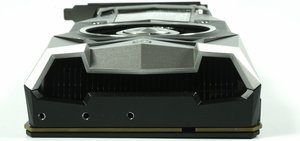
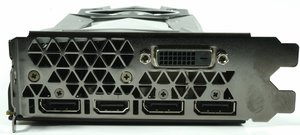
As with Nvidia's other Founders Edition cards, you get access to five display outputs through the I/O bracket, four of which can be used simultaneously in multi-monitor configurations. There's a dual-link DVI-D port, an HDMI 2.0 interface, and three DisplayPort 1.4-capable connectors. The remaining space back there is cut up into openings for exhausting hot air.
Say Hello To GeForce GTX 1080's Thermal Solution
GeForce GTX 1070 Ti FE gets a significant upgrade from Nvidia's 1070 FE card in the form of a vapor chamber cooler, the same one found on GeForce GTX 1080 FE. The compact module is fastened to the PCB right next to the GPU package using four screws.
We now have 51 individual components on the table in front of us, and if you remove the cooler completely, you end up with 12 more.
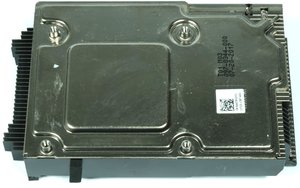

The radial fan sucks air in from your chassis, blows it through the cooling fins, and exhausts it from the I/O bracket. Nvidia's retention frame serves double duty, adding rigidity to the board and cooling the VRM/memory modules.
| Thermal Solution | |
|---|---|
| Type of Cooler | Air Cooling, Direct Heat Exhaust (DHE) |
| Heat Sink | Large Hybrid Vapor Chamber |
| Cooling Fins | Aluminum, Horizontal Orientation, Tight Grouping |
| Heat Pipes | None |
| VRM Cooling | Via Cooling Frame |
| RAM Cooling | Via Cooling Frame |
| Fan | Radial Fan |
| Backplate | Aluminum, Painted BlackNo Cooling Function |
Power Supply & Components
Nvidia borrows from its GeForce GTX 1080 Founders Edition parts bin for the 1070 Ti's PCB. Although GeForce GTX 1070 Ti FE employs five power phases, an empty emplacement indicates room for one more.
The 5+1-phase design is enabled by uPI Semiconductor's uP9511 eight-phase buck controller. It cannot address the voltage converter phases directly, so TI 53603A solid gate drivers are used to control the ON Semiconductor 4C85Ns. These are durable dual N-channel MOSFETs with sufficient reserves in the DC/DC voltage converter category.
| GPU Power Supply | ||
|---|---|---|
| PWM Controller | uP9511uPI SemiconductorEight-Phase PWM Controller |
Gate Driver53603Texas InstrumentsOne per Phase
VRM4C85NON SemiconductorPower MOSFETDual N-ChannelHigh- and Low-Side
CoilsEncapsulated Ferrite Choke
Memory & Memory Power SupplyModulesMT51J256M32HF-80MicronGDDR5, 8 Gb/s8 Gigabit (32x 256Mb)Eight Modules
PWM Controller1 PhaseSingle Buck ConverterGeneric
VRM4C85NON SemiconductorPower MOSFETDual N-ChannelHigh- and Low-Side
CoilsEncapsulated Ferrite Choke33nH
Other ComponentsMonitoringINA3221Monitoring ChipCurrents, Voltages
BIOSWinbond 25Q40Kynix SemiconductorEEPROMBIOS
Shunts & Filter1x Coil (Smoothing) & Shunt behind PCIe Connector (12V Input Voltage)
Other FeaturesSpecial Features- 1x Eight-Pin Auxiliary Power Connector- Filter Choke at Entry
MORE: Best Graphics Cards
MORE: Desktop GPU Performance Hierarchy Table
MORE: All Graphics Content
Current page: A Closer Look At Nvidia's GeForce GTX 1070 Ti FE
Prev Page Meet GeForce GTX 1070 Ti Next Page A Closer Look At MSI's GeForce GTX 1070 Ti Titanium 8G-
10tacle Yaaayyy! The NDA prison has freed everyone to release their reviews! Outstanding review, Chris. This card landed exactly where it was expected to, between the 1070 and 1080. In some games it gets real close to the 1080, where in other games, the 1080 is significantly ahead. Same with comparison to the RX 56 - close in some, not so close in others. Ashes and Destiny 2 clearly favor AMD's Vega GPUs. Can we get Project Cars 2 in the mix soon?Reply
It's a shame the overclocking results were too inconsistent to report, but I guess that will have to wait for vendor versions to test. Also, a hat tip for using 1440p where this GPU is targeted. Now the question is what will the real world selling prices be vs. the 1080. There are $520 1080s available out there (https://www.newegg.com/Product/Product.aspx?Item=N82E16814127945), so if AIB partners get closer to the $500 pricing threshold, that will be way too close to the 1080 in pricing. -
samer.forums Vega Still wins , If you take in consideration $200 Cheaper Freesync 1440p wide/nonwide monitors , AMD is still a winner.Reply -
SinxarKnights So why did MSI call it the GTX 1070 Ti Titanium? Do they not know what Ti means?Reply
ed: Lol at least one other person doesn't know what Ti means either : If you don't know Ti stands for "titanium" effectively they named the card GTX 1070 Titanium Titanium. -
10tacle Reply20334482 said:Vega Still wins , If you take in consideration $200 Cheaper Freesync 1440p wide/nonwide monitors , AMD is still a winner.
Well that is true and always goes without saying. You pay more for G-sync than Freesync which needs to be taken into consideration when deciding on GPUs. However, if you already own a 1440p 60Hz monitor, the choice becomes not so easy to make, especially considering how hard it is to find Vegas. -
10tacle For those interested, Guru3D overclocked their Founder's Edition sample successfully. As expected, it gains 9-10% which puts it square into reference 1080 territory. Excellent for the lame blower cooler. The AIB vendor dual-triple fan cards will exceed that overclocking capability.Reply
http://www.guru3d.com/articles_pages/nvidia_geforce_gtx_1070_ti_review,42.html -
mapesdhs Chris, what is it that pummels the minimums for the 1080 Ti and Vega 64 in BF1 at 1440p? And why, when moving up to UHD, does this effect persist for the 1080 Ti but not for Vega 64?Reply
Also, wrt the testing of Division, and comparing to your 1080 Ti review back in March, I notice the results for the 1070 are identical at 1440p (58.7), but completely different at UHD (42.7 in March, 32.7 now); what has changed? This new test states it's using Medium detail at UHD, so was the March testing using Ultra or something? The other cards are affected in the same way.
Not sure if it's significant, but I also see 1080 and 1080 Ti performance at 1440p being a bit better back in March.
Re pricing, Scan here in the UK has the Vega 56 a bit cheaper than a reference 1070 Ti, but not by much. One thing which is kinda nuts though, the AIB versions of the 1070 Ti are using the same branding names as they do for what are normally overclocked models, eg. SC for EVGA, AMP for Zotac, etc., but of course they're all 1607MHz base. Maybe they'll vary in steady state for boost clocks, but it kinda wrecks the purpose of their marketing names. :D
Ian.
PS. When I follow the Forums link, the UK site looks different, then reverts to its more usual layout when one logs in (weird). Also, the UK site is failing to retain the login credentials from the US transfer as it used to.
-
mapesdhs Reply20334510 said:Well that is true and always goes without saying. You pay more for G-sync than Freesync which needs to be taken into consideration when deciding on GPUs. ...
It's a bit odd that people are citing the monitor cost advantage of Freesync, while article reviews are not showing games actually running at frame rates which would be relevant to that technology. Or are all these Freesync buyers just using 1080p? Or much lower detail levels? I'd rather stick to 60Hz and higher quality visuals.
Ian.
-
FormatC @Ian:Reply
The typical Freesync-Buddy is playing in Wireframe-Mode at 720p ;)
All this sync options can help to smoothen the output, if you are too sensitive. This is a fact, but not for everybody with the same prio. -
TJ Hooker Reply
From other benchmarks I've seen, DX12 performance in BF1 is poor. Average FPS is a bit lower than in DX11, and minimum FPS far worse in some cases. If you're looking for BF1 performance info, I'd recommend looking for benchmarks on other sites that test in DX11.20334648 said:Chris, what is it that pummels the minimums for the 1080 Ti and Vega 64 in BF1 at 1440p? And why, when moving up to UHD, does this effect persist for the 1080 Ti but not for Vega 64? -
10tacle Reply20334667 said:It's a bit odd that people are citing the monitor cost advantage of Freesync, while article reviews are not showing games actually running at frame rates which would be relevant to that technology. Or are all these Freesync buyers just using 1080p? Or much lower detail levels? I'd rather stick to 60Hz and higher quality visuals.
Well I'm not sure I understand your point. The benchmarks show FPS exceeding 60FPS, meaning maximum GPU performance. It's about matching monitor refresh rate (Hz) to FPS for smooth gameplay, not just raw FPS. But regarding the Freesync argument, that's usually what is brought up in price comparisons between AMD and Nvidia. If someone is looking to upgrade from both a 60Hz monitor and a GPU, then it's a valid point.
However, as I stated, if someone already has a 60Hz 2560x1440 or one of those ultrawide monitors, then the argument for Vega gets much weaker. Especially considering their limited availability. As I posted in a link above, you can buy a nice dual fan MSI GTX 1080 for $520 on NewEgg right now. I have not seen a dual fan MSI Vega for sale anywhere (every Vega for sale I've seen is the reference blower design).
